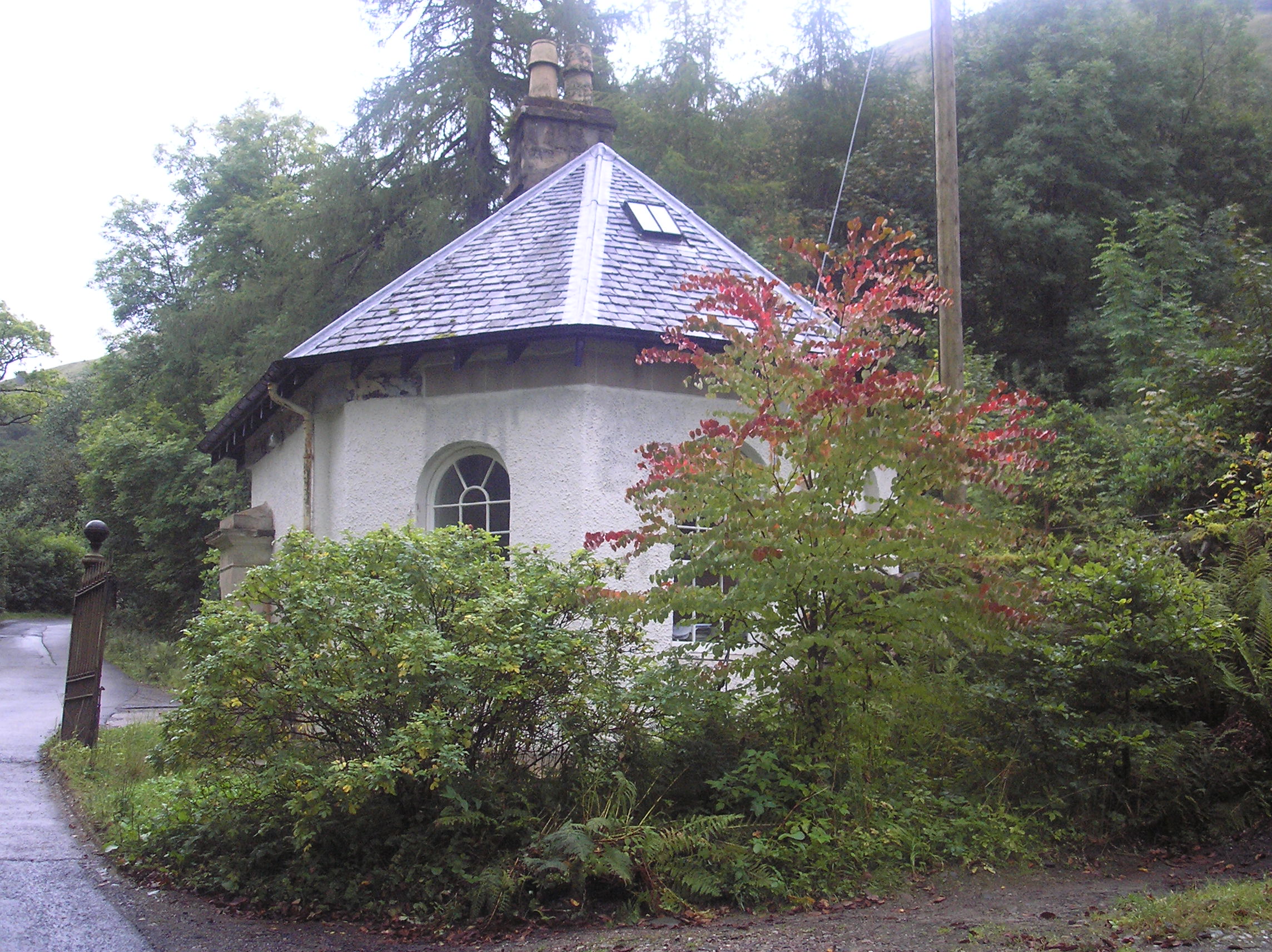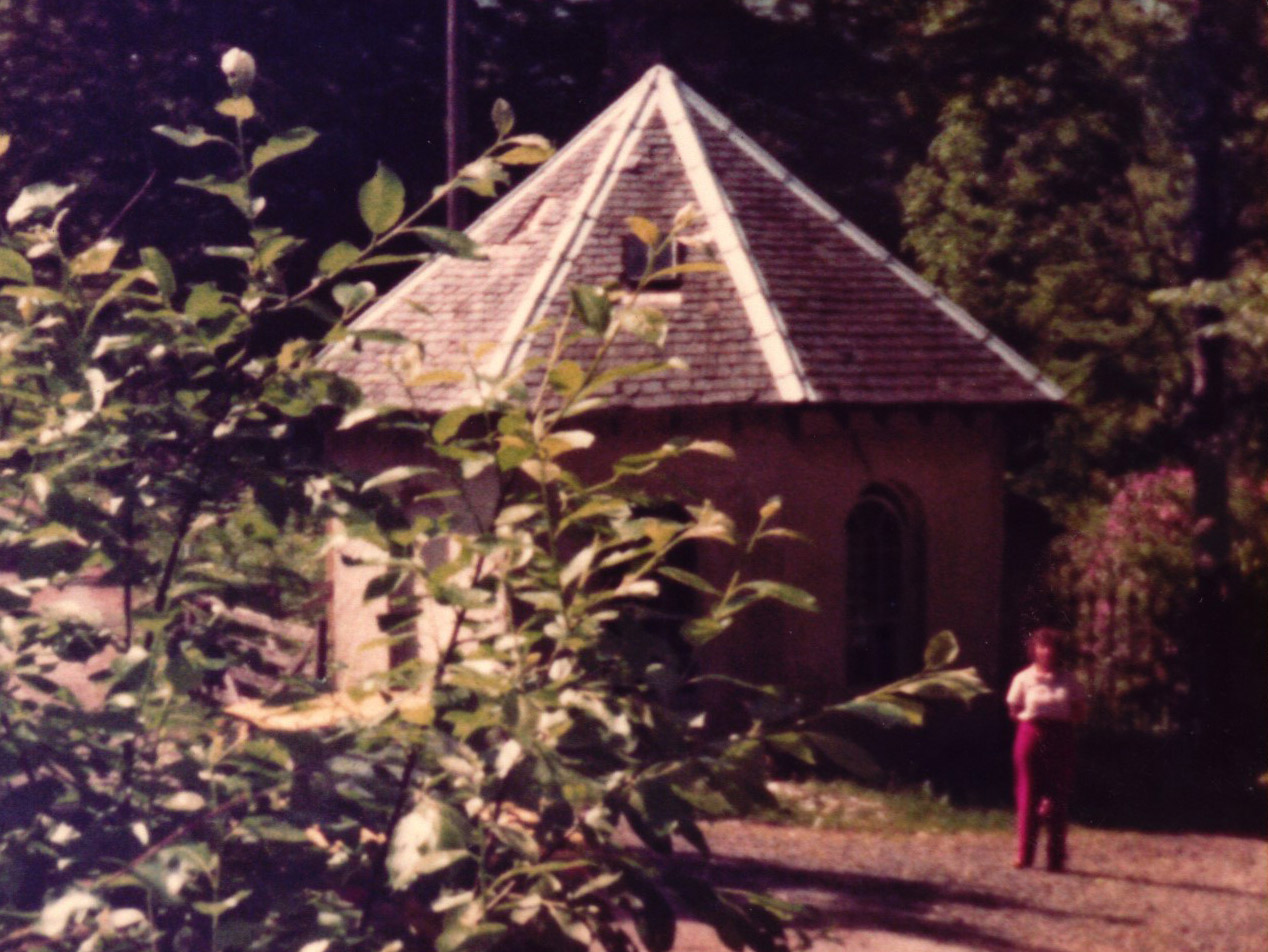East Lodge | 34 occupants (1841 - 1966)
East Lodge 1939 – 1942
Helen Dunion
Grand-daughter of Mr and Mrs Ure
Inside there are 2 rooms & an attic, living room to the left & bedroom
to the right, with a small entrance hallway as you enter.The hallway
consists of table with a basin on top, some pegs for towels. A ladder
leading up to a hatch door, which had to be pushed up by hand to open.
A big step had to be taken to reach the attic floor.
The living room had a linoleum floor & carpets. 2 windows with lace
curtains & pull down blinds & wide window sills. On the sill there was
a glass fishbowl with a boy & girl on either side, looking at the fish.
In front of the window, there was a gate legged table & 2 chairs & a stool.
The other 2 chairs were kept in the bedroom. Then there was a straight
backed chair with wooden arms & a spittoon in front of it.(Granda's chair)
Between that chair & Granny's more comfy chair, was a table with a
wireless & a tilly lamp. On the next wall was a huge sideboard with
cupboards & drawers & a mirror.On top of that there were pictures
& a glass chicken with a lid. This is where the peppermints were kept.
On the other wall there was a pantry cupboard for dishes, food etc and
yummy condensed milk. Then came the black stove with the oven on the
side & always 2 kettles on top.The chrome trim was the shiniest you
ever did see. The chimney went right up through the middle of the house.
On the wall by the cupboard was as parkly type picture of the Empire
Exhibition & one of a parrot. I still have the parrot.
Behind the door were hooks for our coats.The door was painted with a
marble look. Sort of beige gold & yellow.Grand was so proud of the paint
job!! --
The bedroom had a small fireplace & at the side was a set of shelves
with knick knacks & photos & a coal oil lamp.Then there was the huge
bed-in-the-wall.(recessed) a chest of drawers & a dresser.( Don,t recall a
wardrobe or cupboard) 2 chairs from living room.Bath night was a metal
laundry tub filled by kettles of boiled water, in front of the fire.
The attic was very cosy with the chimney going up through the centre.
This divided the space in to two rooms.One side had a double mattress on
the floor ( for company) & just trinks & chests & boxes. The other side
had a small window which was pushed out to open. It had a bed & a chest
of drawers small school desk & a small chest of drawers for doll clothes
I have it in Canada for my jewellery.
Oh! The toilet & the water!!! There just wasn't any! There was a tap out-
side which was piped down from the mountain & when that froze there
was a long hike to the river. A pail was brought in & placed under the table
in the hallway for dishes, handwashing etc. The kettles were filled from the
tap.
Constantly on the boil on the stove. The toilet was across the avenue, down
a little curved path to an outhouse with a chemical toilet. Toilet paper was
tissue paper squares and the tissue from Mandarin oranges at Christmas!
Outside the house there was a box on legs with a fine wire screen door. That
was our 'fridge'. A long path led down to the wash-house, chicken house, coal
shed & wood shed. There was a source of water there somewhere? I can't
remember. The gates to Ardkinglas Estate were attached to the house & had
to be opened & closed for visitors.
East Lodge, Ardkinglas (David Sumsion’s office)
This is already been described in the Royal Commission volume as ‘Lodge’ –
A lodge of early 19th century character, now unoccupied with adjacent ashlar piers and metal gates, stands .85 km east, south east of Ardkinglas house. At the north side of the former road to Strachur, now by passed by the A815. It measures 8.5 m by 5.8 m overall and is elongated octagonal plan containing two rooms divided by a central chimney stack. The base course, door and window dressings are of sound stone ashlar and the remaining masonry of hulled rubble with a hipped inflated roof having sprocketed eaves. In each end there are two round arched sash windows and a third corresponding blind recess, and the doorway is at the centre of the NE side wall.
This building was re-roofed by John MacDonald [double-check year]. Although many of the rafters were saved the sarking was replaced entirely - obviously the slates have been redone and the leadwork is new. At that same stage an early lime harling exercise was undertaken, this using bag lime. This repair work by John MacDonald was overseen by Bercott Architects, the architect himself Baron Bercott of 1 Park Terrace, Glasgow.
There is a set of plans (kindly shown by David Sumsion) that are dated August 1991. After the internal fitting out of the interior, this shows the additions and part of the original arrangement, including the central fire stack which had to the E a large broad opening (probably for a range) and then a smaller fireplace facing into the W room (the living room).
As it is now the interior has been heavily lined out loosing approximately 5% of its former interior space, this has been slightly re-arranged more recently by David Sumsion, the eastern room having been subdivided with a small partition on the S side, this area contains the pre-existing kitchen slightly re-arranged.
Sash and case windows for the most part appear original; these are detailed with a Victorian gothic glazing bar profile. The lower sash in the eastern window has a slightly elongated profile, secondary as the upper sash has the Victorian gothic.
It's possible that even the early elements of the existing roof structure are secondary; up in the loft space the upper half-meter of walling at the wall head appears possibly to have been added. The existing chimneystack, where it is visible within the roof space, retains some apparent traces of exterior lime harl or plaster and much whitewash – it seems that this may have originally been external (the alternative is that there were chambers up in the roof space for bedding, as at one point it is recorded that 13 people - 11 family and 2 lodgers - resided in this diminutive structure).
Above the attic floor level the chimney steps in twice with offsets. The upper step at least looks rather like an exterior detail scarcement. Some of the plain wall head course stones were replaced to the W, that part of the structure having had structural problems due to subsidence.
It is possible that the structure had had a much lower, perhaps flatter roof, set behind a parapet. This detail may have been less successful that the existing overhanging eaves in such a wet climate.















